- Estimating relationships by combining DNA from multiple siblings – DRUID
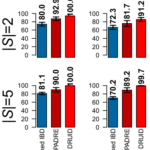 When trying to use DNA to figure out how two people are related, the closer their relationship, the easier it is. This is clear in the image below, which is from a paper that shows the rates that relatives of different degrees get classified to each of four different degrees. Genetic testing companies typically don’t… Read more: Estimating relationships by combining DNA from multiple siblings – DRUID
When trying to use DNA to figure out how two people are related, the closer their relationship, the easier it is. This is clear in the image below, which is from a paper that shows the rates that relatives of different degrees get classified to each of four different degrees. Genetic testing companies typically don’t… Read more: Estimating relationships by combining DNA from multiple siblings – DRUID - IBD sharing rates across length thresholds
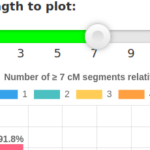 Some time ago, we received a request in response to our sharing rate plots for relatives with ≥ 7 cM segments to also plot rates for ≥ 5 cM segments. Instead of just calculating the rates for one more threshold, it seemed good to include several different lengths. Thus we now have a IBD sharing… Read more: IBD sharing rates across length thresholds
Some time ago, we received a request in response to our sharing rate plots for relatives with ≥ 7 cM segments to also plot rates for ≥ 5 cM segments. Instead of just calculating the rates for one more threshold, it seemed good to include several different lengths. Thus we now have a IBD sharing… Read more: IBD sharing rates across length thresholds - Reconstructing DNA from one parent with HAPI
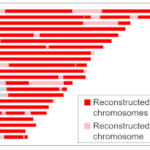 For RootsTech Connect this past week, we released the tool HAPI, which reconstructs DNA for one parent using data from three or more children and their other parent. Two videos from RootsTech describe ancestor DNA reconstruction in general and the HAPI tool in particular. This post briefly reviews the video about HAPI and then goes… Read more: Reconstructing DNA from one parent with HAPI
For RootsTech Connect this past week, we released the tool HAPI, which reconstructs DNA for one parent using data from three or more children and their other parent. Two videos from RootsTech describe ancestor DNA reconstruction in general and the HAPI tool in particular. This post briefly reviews the video about HAPI and then goes… Read more: Reconstructing DNA from one parent with HAPI - Minimal viable genetic maps
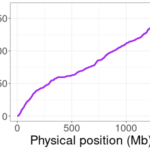 In our first blog post on what is a centiMorgan?, we talked about genetic maps. Many of the planned tools at HAPI-DNA (and all of the current ones) use genetic maps to calculate lengths of segments or to simulate segments. One of the most commonly used genetic maps (the HapMap map) contains nearly 3.4 million… Read more: Minimal viable genetic maps
In our first blog post on what is a centiMorgan?, we talked about genetic maps. Many of the planned tools at HAPI-DNA (and all of the current ones) use genetic maps to calculate lengths of segments or to simulate segments. One of the most commonly used genetic maps (the HapMap map) contains nearly 3.4 million… Read more: Minimal viable genetic maps - How often do two half relatives share DNA?
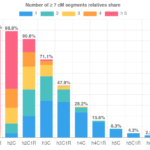 Following up on the last post about full relatives, the plot below shows the rates that half relatives share ≥ 7 cM IBD segments. This uses the same abbreviations as in the previous post—1C means first cousins, 3C1R stands for third cousins once removed—but all relationships are prefixed with an `h’ for half. The first… Read more: How often do two half relatives share DNA?
Following up on the last post about full relatives, the plot below shows the rates that half relatives share ≥ 7 cM IBD segments. This uses the same abbreviations as in the previous post—1C means first cousins, 3C1R stands for third cousins once removed—but all relationships are prefixed with an `h’ for half. The first… Read more: How often do two half relatives share DNA? - How often do two relatives share DNA?
 Close relatives like two full siblings, an aunt and nephew, or a grandparent and grandchild always share IBD segments, so they show up in testing companies’ relative matches. However, more distant relatives may not share any IBD segments. In fact, the chance that two people share DNA decreases with the distance of their relationship. This… Read more: How often do two relatives share DNA?
Close relatives like two full siblings, an aunt and nephew, or a grandparent and grandchild always share IBD segments, so they show up in testing companies’ relative matches. However, more distant relatives may not share any IBD segments. In fact, the chance that two people share DNA decreases with the distance of their relationship. This… Read more: How often do two relatives share DNA? - What is a centiMorgan?
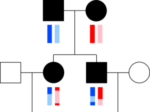 Genetic testing companies and geneticists in general use centiMorgans (cM) to measure lengths of DNA that relatives share. Researchers have analyzed DNA from many parents and children to measure how likely a region of DNA is to recombine in one generation.
Genetic testing companies and geneticists in general use centiMorgans (cM) to measure lengths of DNA that relatives share. Researchers have analyzed DNA from many parents and children to measure how likely a region of DNA is to recombine in one generation.